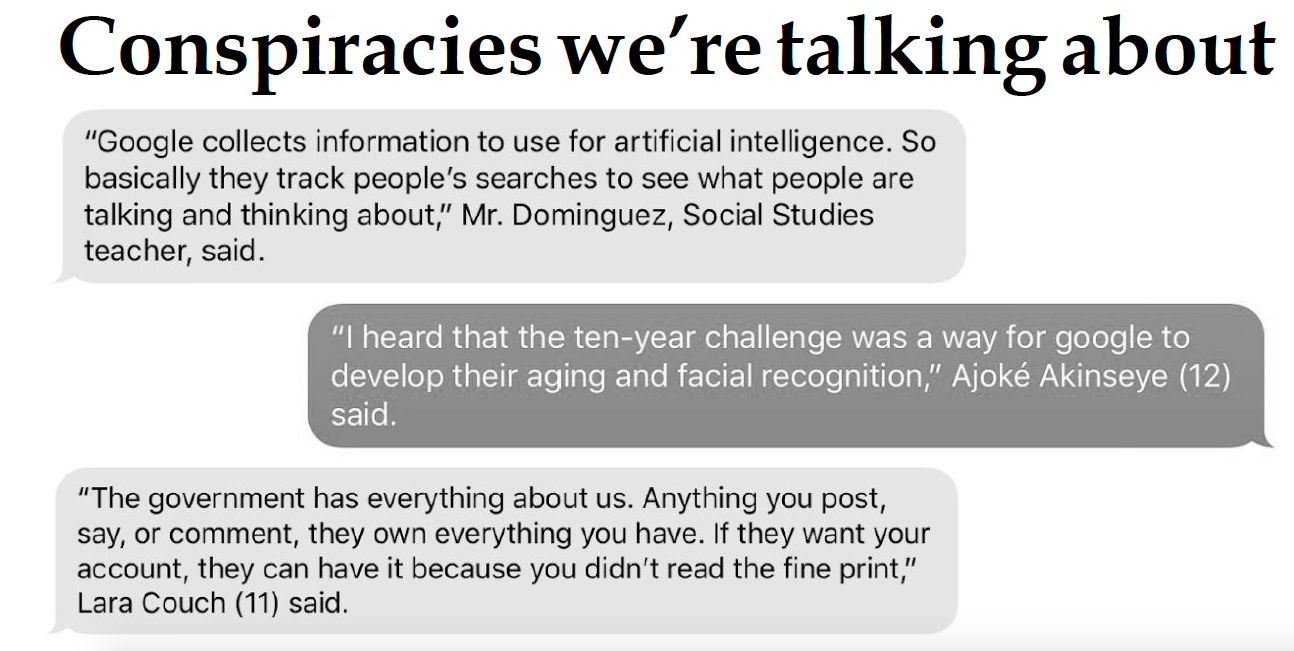The effect of social media
/The following is an article written by GSPA Student Advisory Board member Isabelle Manders. The story was published in the Marietta High School Accipiter Pitchfork in March, where she serves editor-in-chief.
The average age that kids are joining social media is 12.6, according to a Common Sense Media Census report. However, the age limit to join most social media platforms is 13.
Graphic by Piper Rausch
“I can’t say I’m not completely addicted to social media because I feel like everyone is to an extent. I feel like my life would be completely different if I didn’t. Our generation basically grew up with social media. I think I got on social media when I was in the sixth grade. I was, like twelve,” Michelle Gallardo (12) said.
The brain is not fully developed until the age of 25. At the ages from 11 to 13, the ages that the majority of the youth joined social media, the brain is still far from maturity. During these years, egocentrism emerges causing children of these ages to become highly self-conscious. A report by Ofcom discovered that more than 50 percent of kids aged as young as three and four use a tablet while one in seven has their own device. “Kids are joining social media way too early. I feel like thirteen is ok. But, my little sister is seven and she has [a smartphone],” Michelle Gallardo (12).
Social media use at such a young age has both positive and negative effects. It has been shown that platforms such as Instagram enhance connectivity and self-awareness as well as promote self-expression. “[I use Instagram] because I can put pictures such as my artwork. I can also put up smaller stories that don’t interfere with the art that I am posting,” Jack Sloane (11) said.
An excessive use of social media can result in a decrease in academic achievement, hindered relationships, and desensitization. According to a recent study published in the Journal of Abnormal Psychology, over the last decade, depression or anxiety amongst adolescents aged 12 to 17 has increased by 52%. This increase has been connected to the rise of digital media and electronic communication. The time adolescents spend with their friends face to face has declined from 2009 to 2017.
“I feel like people talked to each other face to face a lot more, now there’s so much happening on our screens that we’ve forgotten how to communicate in person,” Egle Trilikauskyte,
class of 2009 alumni, said. “People get addicted to social media and strive for acceptance online like they would in person within a community. I think it’s leading some young people to depression and isolation. It’s ironic what we thought would connect so many people has actually had an adverse effect. Of course, there are a lot of positives to social media as well. Just like everything in the world, moderation is key.”
Another common factor is that younger people are more sleep deprived than in the past. The artificial light emitted from phone and computer screens may cause a delay in the biological clock. ”Sometimes I feel super stressed from finishing an assignment to the point that I have to use my phone or else it’s impossible for me to fall asleep,” Shaina Hidalgo (12) said.
Other than an increase in depression, mass digital media has caused not only adolescents but even adults to become more desensitized. The current generation can be described as the digital age with world news being accessible with the click of a button. Unlike what was once only heard on the radio, breaking news is now accompanied by videos and pictures. Hundreds of media sites create their own way to share information whether that includes the explore page on Snapchat or the IGTV section on Instagram. Information has become more accessible than ever. However, constant exposure to violence may be creating a desensitized youth.
“I think that people that are too desensitized don’t really process things in the way that they should or care enough about certain topics,” Mairi Allen (12) said.
In July 2017, a group of Florida teens mocked and recorded a drowning man, failing to save him from his death. In March 2019, New Zealand’s deadliest shooting was live streamed on Facebook for 17 minutes. “I think social media is more bad but it does have the potential to be
good. People just use it for the wrong reasons,” Emmie Hall (12) said. “[My daughter uses her phone] to play games such as sims, Cooking City, and Idle Painter. And of course, [she also uses] Amazon Music, Netflix, and Amazon shopping,” Jenny Storino, mother of 9-year-old Zola Storina, said. “I joined Snapchat to stay in touch with people and see what’s going on with them,” Eryn Earley (11) said “Back in my day, nine years ago, we weren’t allowed to have cell phones out in class and would often get in trouble for texting. Facebook was a big thing but Instagram, Snapchat, Twitter did not exist,” Egle Trilikauskyte, class of 2009, said.



